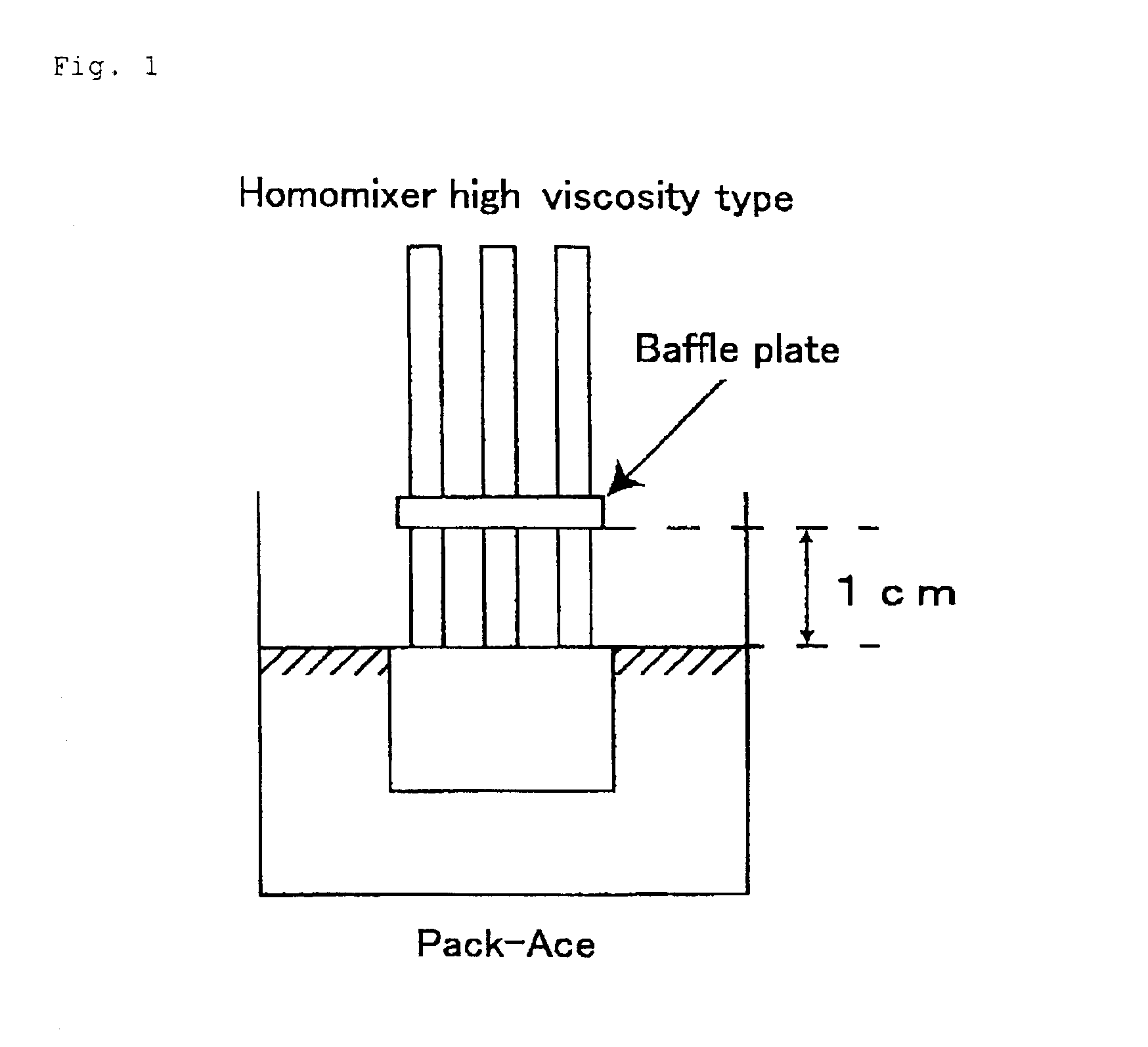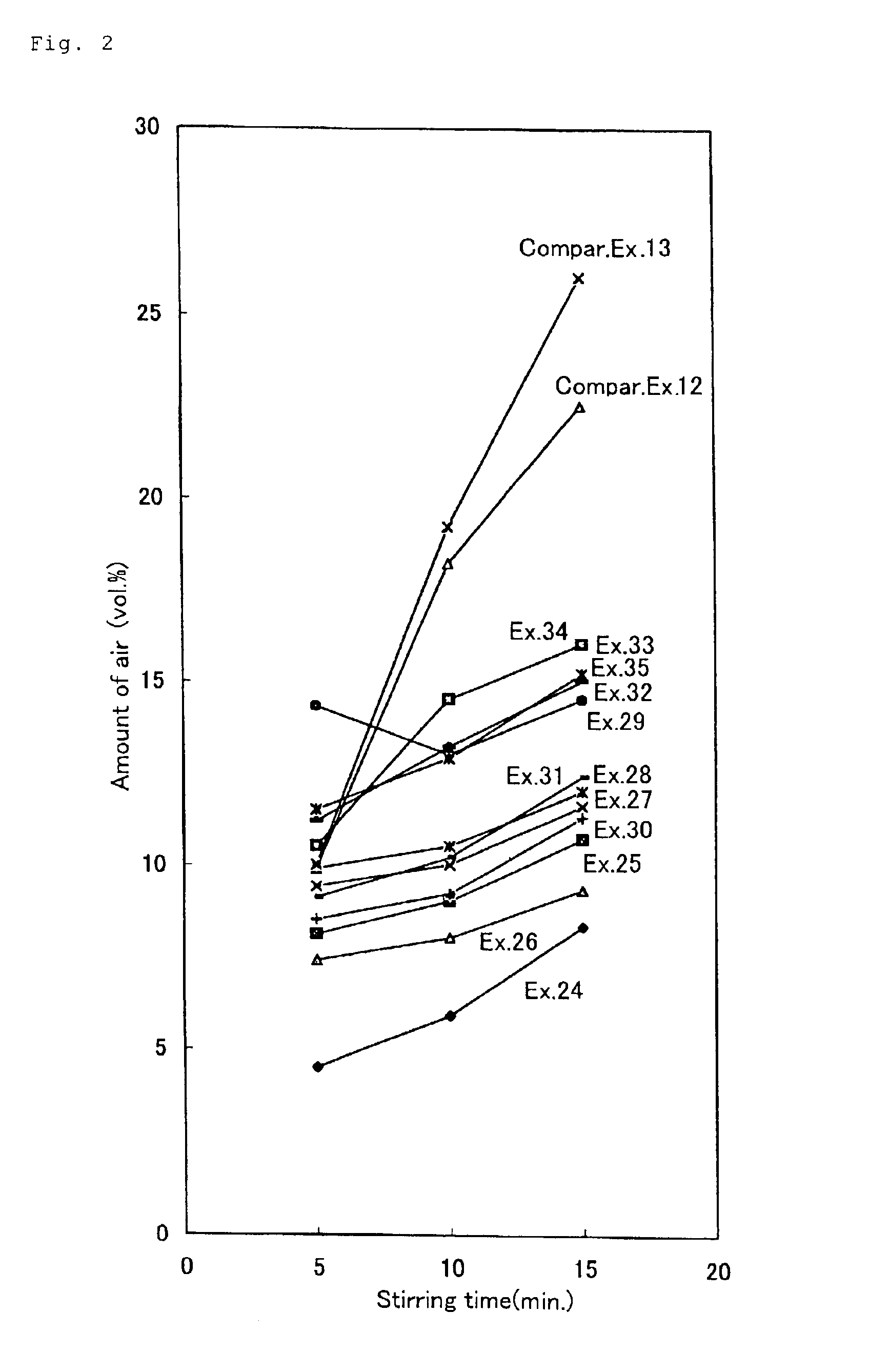Cement admixture and cement composition
- Summary
- Abstract
- Description
- Claims
- Application Information
AI Technical Summary
Benefits of technology
Problems solved by technology
Method used
Image
Examples
production example 1
[0167]A glass reaction vessel equipped with a thermometer, stirrer, dropping funnel, nitrogen inlet tube and reflux condenser was charged with 339.6 g of water, the reaction vessel was purged with nitrogen with stirring, and the charge was heated to 80° C. in a nitrogen atmosphere. Then, an aqueous mixed monomer solution (503.5 g) prepared by mixing up 333.6 g of methoxypolyethylene glycol monomethacrylate (average molar number of addition of ethylene oxide: 25), 66.4 g of methacrylic acid, 100 g of water and 3.5 g of 3-mercaptopropionic acid as chain transfer agent, was added dropwise over 4 hours and 46 g of an aqueous solution containing 4.6 g of ammonium peroxodisulfate was added dropwise over 5 hours. Then, the temperature was further maintained at 80° C. for 1 hour to thereby drive the polymerization reaction to completion, whereby a copolymer (1) according to the invention was obtained in the form of an aqueous medium solution of a copolymer having a weight average molecular ...
production example 2
[0168]A glass reaction vessel equipped with a thermometer, stirrer and reflux condenser was charged with 150 g of octyloxypolypropylene-polyethylene glycol (average molar number of addition of propylene oxide: 20; average molar number of addition of ethylene oxide: 3), 10.6 g of maleic anhydride and 1.4 g of 1,8-diazabicyclo[5.4.0]undecene-7 (DBU), and the contents were heated to 60° C. Then, the temperature was further maintained at 60° C. for 4 hours to drive the esterification reaction to completion to give a half esterification product (1) according to the invention.
production example 3
[0169]A glass reaction vessel equipped with a stirrer was charged with a tetrahydrofuran solution (25.2 g) containing 10 g of octadecyloxypolypropylene-polyethylene glycol (average molar number of addition of propylene oxide: 30; average molar number of addition of ethylene oxide: 5), 0.12 g of sodium hydride was then added, and the mixture was stirred at room temperature for 1 hour with stirring, followed by addition of a tetrahydrofuran solution (12.5 g) containing 1.2 g of maleic anhydride. The mixture was further stirred at room temperature for 2 hours to drive the esterification reaction to completion. The tetrahydrofuran was then distilled off and, after water substitution, a half esterification product (2) according to the invention was obtained.
PUM
| Property | Measurement | Unit |
|---|---|---|
| Temperature | aaaaa | aaaaa |
| Percent by mass | aaaaa | aaaaa |
| Percent by mass | aaaaa | aaaaa |
Abstract
Description
Claims
Application Information
 Login to View More
Login to View More - R&D
- Intellectual Property
- Life Sciences
- Materials
- Tech Scout
- Unparalleled Data Quality
- Higher Quality Content
- 60% Fewer Hallucinations
Browse by: Latest US Patents, China's latest patents, Technical Efficacy Thesaurus, Application Domain, Technology Topic, Popular Technical Reports.
© 2025 PatSnap. All rights reserved.Legal|Privacy policy|Modern Slavery Act Transparency Statement|Sitemap|About US| Contact US: help@patsnap.com



